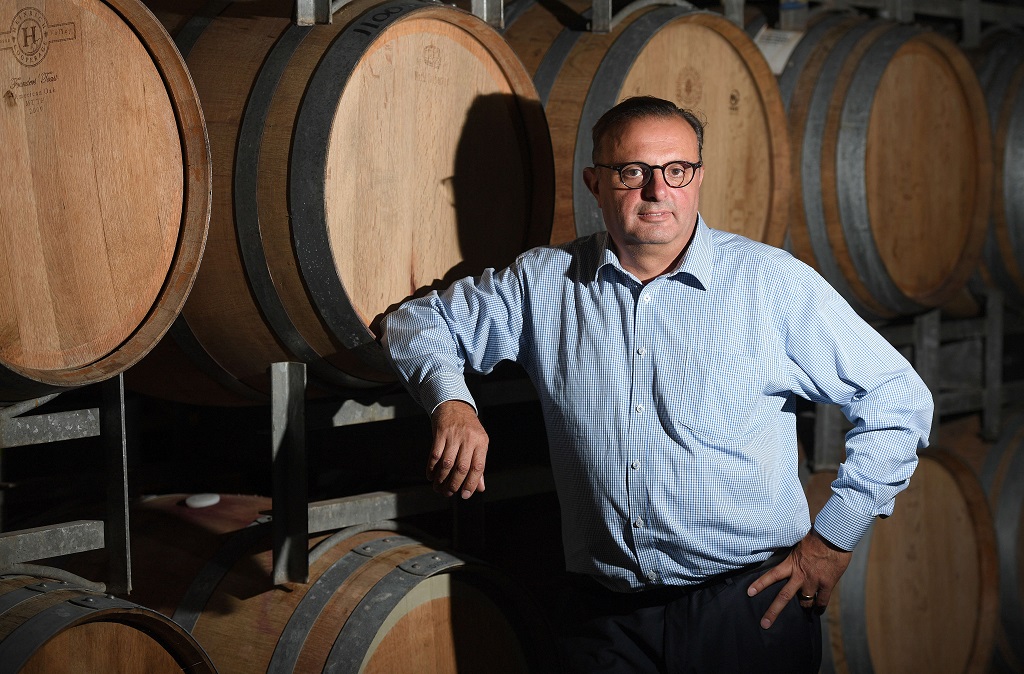Image: Bill Moularadellis, ACWP Chair.
In a bold move, wine producers of 70 per cent of the industry’s total production have united to help grow the value of every vineyard and winery.
Australian Commercial Wine Producers Limited (ACWP) is the new representative body for Australia’s three largest winegrowing regions – NSW’s Riverina, Victoria’s Sunraysia and South Australia’s Riverland.
Between them, the three regions produce approximately 70 percent of Australia’s total grape and wine production.
The Australian wine industry is characterised by two distinct sectors – the commercial sector which predominately retails wine for less than $10/bottle with FOB export values of less than $45/case, and the premium sector that makes wine above this level.
“Premium producers by their numerical majority have had greater influence on our industry’s policy settings, even though they contribute significantly less total industry levies and sales. We seek to redress that imbalance,” said chief executive of ACWP Chris Byrne.
“Most of the large commercial producers from our three largest wine regions have been underrepresented up to this time. ACWP will seek to improve the representation of all commercial producers in Australia.
“Importantly, ACWP seeks to bring a collaborative and synergistic voice in the college of industry organisations to achieve a balanced and inclusive approach between the two industry sectors.”
Byrne said the formation of ACWP aimed to ensure that commercial wine producers could continue to support the whole of the Australian wine industry by maintaining the sector’s competitiveness in international and domestic markets.
Chair of ACWP, Bill Moularadellis of Kingston Estate Wines, said it was critical for Australia to develop and grow other export markets, given the recent loss of the Chinese wine market.
“It will be commercial wine that will lead this momentum,” Moularadellis said.
ACWP members contribute the majority of the $2M per month in statutory levies that is collected by the Government, for the benefit of the wine industry’s R&D and international marketing initiatives.
“Looking back over the last 10 to 20 years, it is difficult to illustrate to our members how they are now better off from their significant long-term investment,” Moularadellis said.
“ACWP will seek to improve the effectiveness of our industry’s levies.”
Moularadellis said Australia’s long-term premiumisation strategy had not been as effective as was hoped after such a sustained period of perseverance.
“Since 2009, excluding China, total sales of our premium bottled exports above $45/case have almost halved from 12.2M cases to 6.6M cases per annum. We are exporting significantly less premium wine now than we were 12 years ago,” Moularadellis said.
“More than ever, we are now dependent on our commercial export sales, and we need policy settings to protect this reliance.”
Moularadellis said the evolution of the Australian wine industry as a significant world wine producer had at its foundation, the fact that its commercial wine production sector was more efficient and innovative than our competitors.
“That leadership position has been eroded by continued improvements in most other countries,” he said.
“The sustainability of the commercial wine sector remains critical to Australia’s ability to be competitive across all international wine market sectors and to re-stake our position as the vineyard for the world.”
Moularadellis said the recently announced UK/Australia free trade agreement would provide greater relative opportunity for our commercial wines.
Australia sells just over 4M cases of bottled wine to the UK at an average price of $41/case with the equivalent of a further 25M cases being shipped as bulk wine.
“We really do need to have our industry resources well aligned to take full advantage of this new opportunity,” Moularadellis said.
Are you a Daily Wine News subscriber? If not, click here to join our mailing list. It’s free!
















